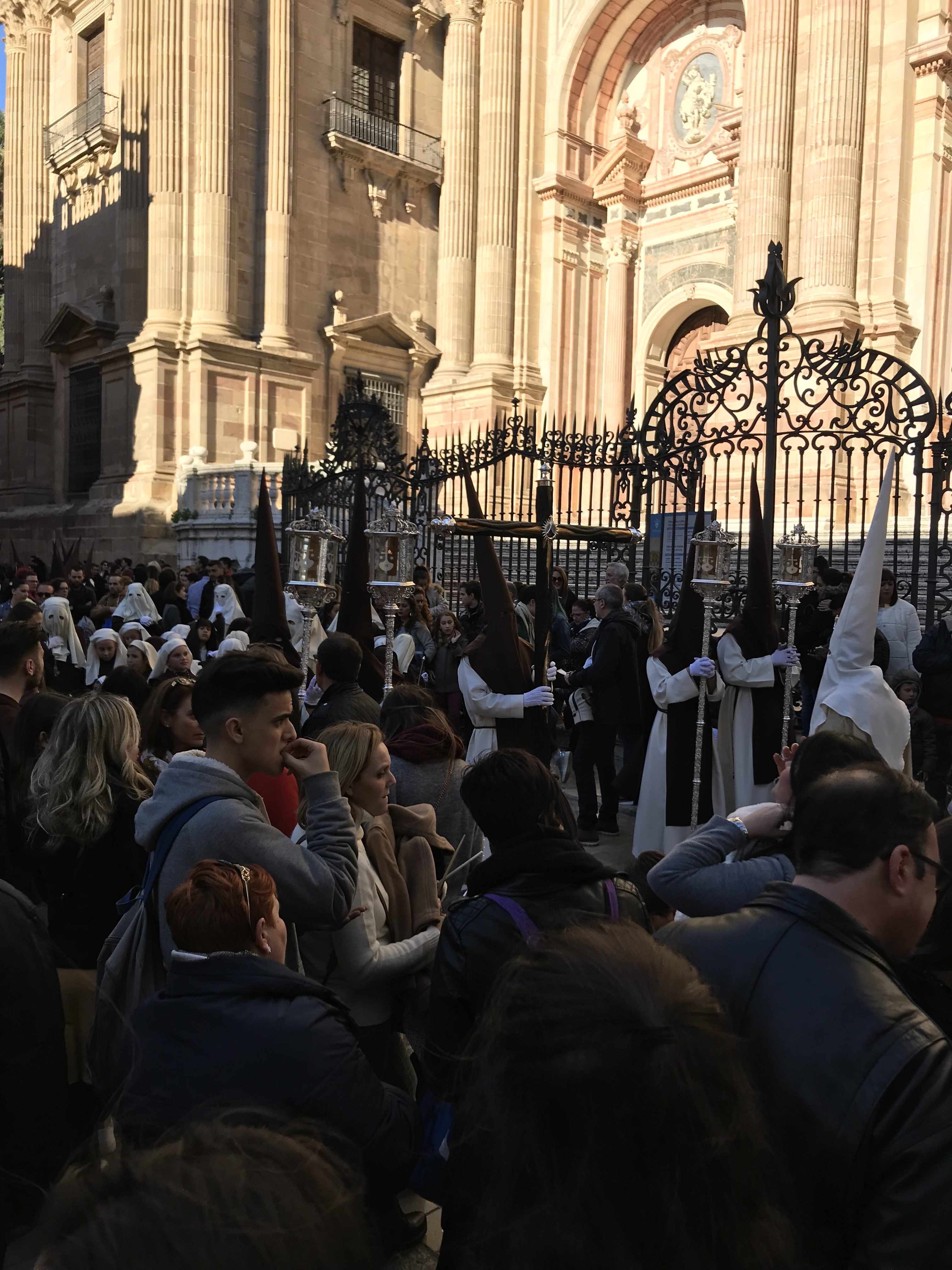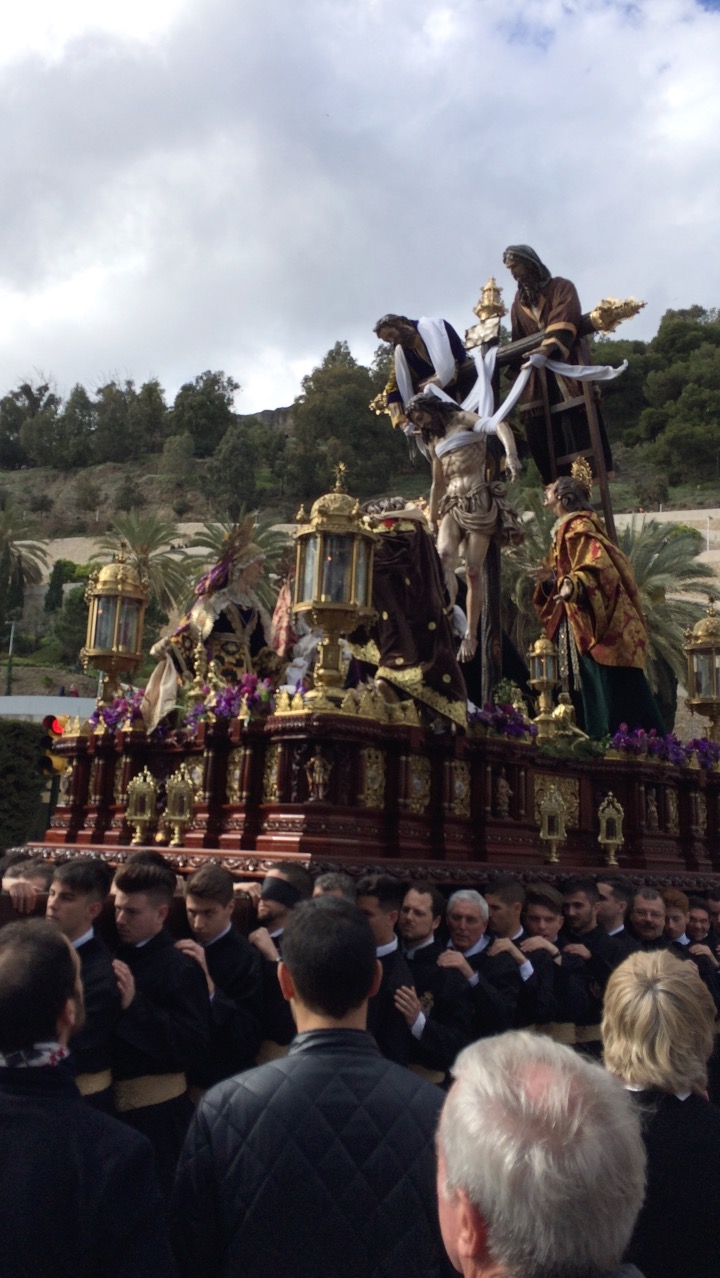Author: Gabi Neuman
Location: Granada, Spain
This past week in Spain was Semana Santa or Holy Week, the week leading up to Easter Sunday. To say that Spaniards take their celebrations during Semana Santa lightly would be an extreme understatement. The entire week is a vacation week, with processions taking place every day through the streets and crowds surrounding those processions in a swarm (think the size of Fourth of July parades but with tiny, narrow cobblestone streets…and no candy being thrown to onlookers).

Just to describe the process a little bit (which won’t do it justice, but anyways) each city or town has their own processions which consist of a group of men carrying a massive float that contains statues of Jesus and his crucifixion or the Virgin Mary, a large amount of flowers, a canopy covering the statues in some cases, candles, gold, and any other items that contribute to the enormous amount of weight. There are about 6 rows of men manually carrying the float and there are even more men under the float that you can’t see. From what one Spanish girl told me, each man can be carrying 100 pounds or even maybe even more, which is distributed just on their shoulders without any padding to help with the immense weight. The float is preceded by a group of men and women whose faces and heads are covered with large pointed hats as they carry candles and also children and young people who swing the incense holder, leading up to the float. The float is then followed by a band playing solemn hymns. All in all, the processions are an amazing spectacle and a great opportunity to to experience while being abroad.

While Semana Santa seems to me to be one of the most important traditions Spain has to offer, for some it also seems to be just that—a tradition. Although the basis of the processions is to commemorate and celebrate the life of Jesus, his death and resurrection and reflecting on what that means, many seem to participate in the tradition as part of their culture and only for that purpose. They remember their roots and history, appreciating the art and tradition but not taking in the reason behind the processions and why it is they are celebrating. In all honesty it’s a little sad to me, coming from a Christian home and background where Easter is one of the most important days of the year, especially in the church, and makes me question the value of traditions and important religious celebrations like Easter and Christmas—am I celebrating with a purpose or just because it’s how it always has been?

Experiencing Semana Santa here in Spain has not only caused me to observe and question the cultural values of the Spanish, but also my own. It has given me the opportunity to look beyond the surface of what we consider culture and delve into the meaning and actions driving that culture, whether that be traditions like Semana Santa in Spain or Easter in the United States. This constant stream of learning seems to be a pattern of mine while being abroad, and hopefully I continue it during my next few months here.

Leave a Reply